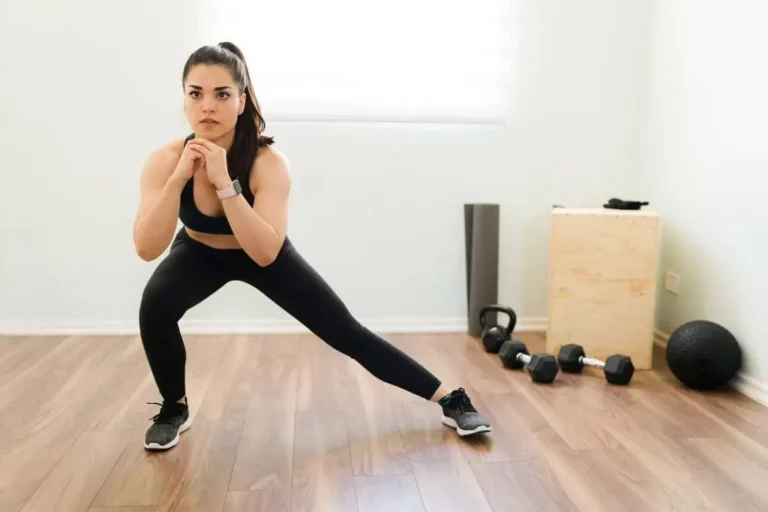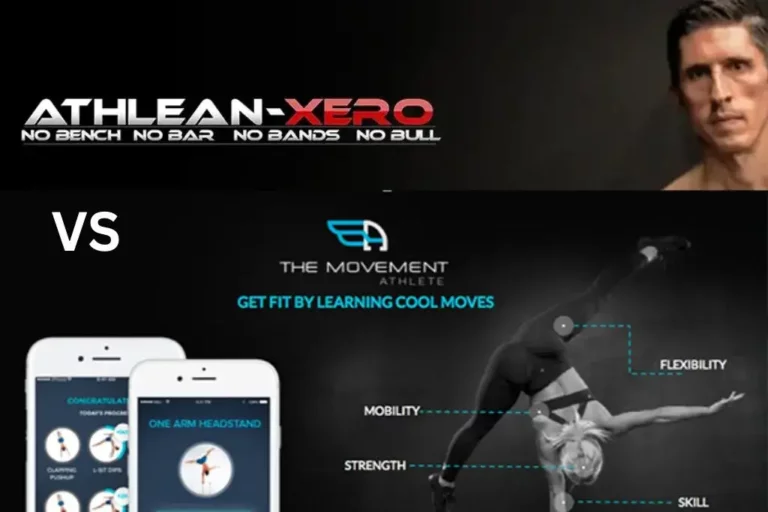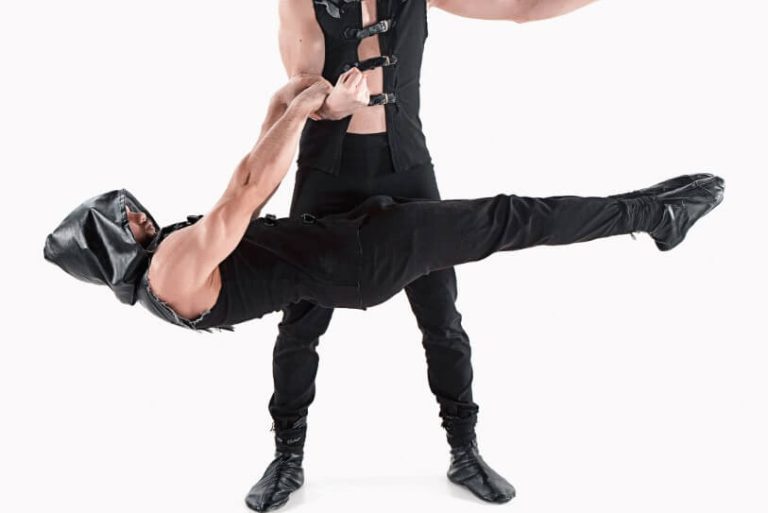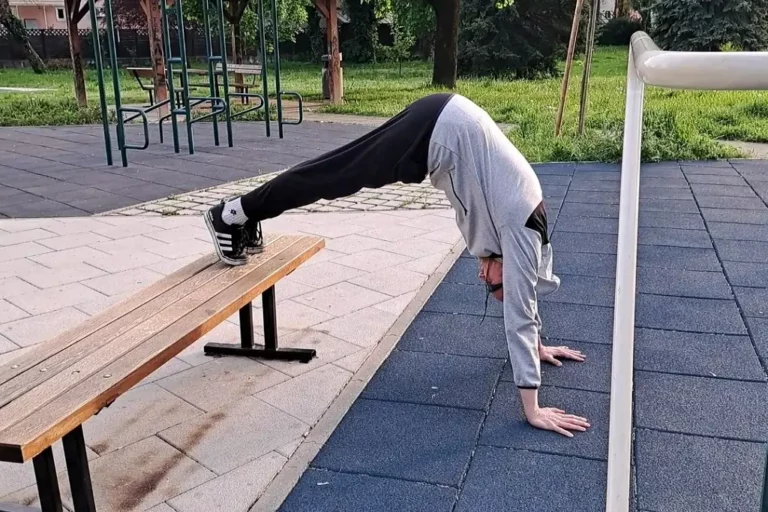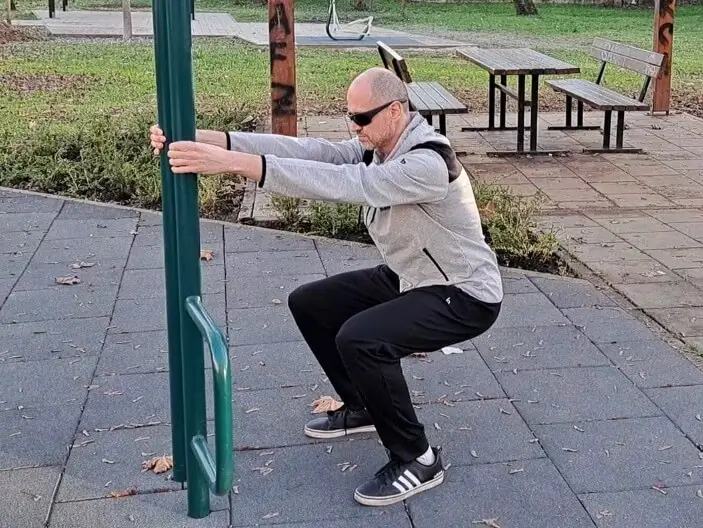Complete Calisthenics Workout Guide – From Beginner To Pro
Calisthenics workout was very appealing to me when I started. When I started my fitness journey I didn’t know anything about training theory and how to customize my workouts. The only way I could start was by following ready made workout programs.
That was great and it was working the first two years without problems. In the first year, I lost 9 kg (around 20 lbs) of fat. I gained 2 kg (around 4.5 lbs) of lean muscle mass. This felt great. I was in the best shape ever.
Next year I gained another 4.5 lbs of lean muscle mass. That was the end of my newbie gains.
Next two years I did the same as in the first two years, but I achieved nothing. In year 5 I started trying new things. I tried various splits. I increased and then decreased the workout frequency. But I wasn’t really measuring my progress. Again I achieved no muscle gains.
I was able to increase my strength and was able to do some new cool moves. Now I decided to start tracking things. I will report any improvement when I see it.
Calisthenics Workout: Beginners
When you start out, you are coming from inactivity to some kind of activity. Almost anything you do works. You notice reducing your body fat and gaining muscle. It works like magic. It becomes addictive. The more you work the better you feel.
You learn new things. There is a lot of new knowledge you will get about workouts and how to train. You learn proper form and increase the rep count. At this point, you move from easier skills to harder ones in a breeze. The calisthenics workout is really working for you.
You will also learn how to eat right. How to recognize various food groups. How to know what food contains which macronutrient. You start to think about how you should eat to help your body use what you eat to build muscle.
Then you learn your muscles grow only when you rest. So you start to accept the value of rest. Now you know this is one of the most valuable parts of your fitness journey.
To sum it all up. When you start things will work pretty easily. You might not be aware of it and it may seem slow. But, once you reach the next level, you will know how easy it was when you started.
Try to learn as much as you can about the right nutrition, rest, and training. All you learn will come in handy later.
Newbie mistakes
When you start you will make a lot of mistakes. You may jump from one calisthenics workout program to another. You may try things that are too hard for you and may get injured. Your eating habits will be way off. Your resting will be far from optimal.
When you start you may feel you know how to do the moves. After some time, you will notice more and more details and realize how awful was your initial execution.
When you improve your form, you will have to reduce the number of reps. It’s because when you do moves with the correct form you need more strength.
Now, how do you start working out when you are a total newbie?
Beginner calisthenics workout
When you are starting to work out and want to build muscle, you may stumble upon two basic training approaches. One is weight training. The other is bodyweight training. Bodyweight training is also called calisthenics training or calisthenics workout.
For me, the choice was easy. A few times I tried working out with weights. I signed up for a gym membership and started going more or less regularly. It never lasted more than 6 months in a row.
As time went by, adding one more plate at the end of a bar was simply boring. On one occasion I dislocated my shoulder when I added one plate too many.
This time I wanted to try working out using nothing but my own body weight. Seeing Chris Heria and him doing muscle ups with ease seemed so cool. I wanted to be able to do it. So I made a choice to try a calisthenics workout.
Now, what would you do when you are just starting:
- Use full body split, also known as total body split
- Do 3 workouts per week
- Take one to 2 days rest between workouts
- Use generic warm up and cool down routines
- Almost anything you do sticks and progress is easy
- Learn as you go (proper nutrition, workouts, rest)
Intermediate and advanced calisthenics workout
When you reach the next level you will notice some changes. You will improve your form. When you do a move, you will notice nuances that were hard to pinpoint when you were starting.
Your progress slows down, or you face plateaus in your progress. You may go through periods of improvement followed by periods of decline in strength and capability.
How do you approach your workouts on intermediate and advanced levels?
- Experiment
- Measure everything and tweak accordingly
- Try various splits like upper/lower, push/pull/legs
- Try doing more workouts per week
- Try doing fewer workouts per week
- Note what works and adjust your workouts to how your body reacts
- Try adding specific flexibility workouts either between your regular strength workouts or as a part of your strength workouts
Main muscle groups and progressions
To be able to progress with your calisthenics workouts, you have to learn a few things. The first thing is the progressions and which muscle groups will they target.
Before getting any further it’s important to notice a few things. First, most calisthenics skills are what are called compound moves. This means bodyweight skills will work several muscle groups at once.
This is for the most part true with harder calisthenics skills. In the hardest skills, you will have to engage your entire body to be able to pull them off.
Now, every progression targets one or more specific muscle groups. Those muscle groups are the primary movers in the moves you perform. So, here are the main muscle groups and progressions you use to target those muscle groups.
Abs
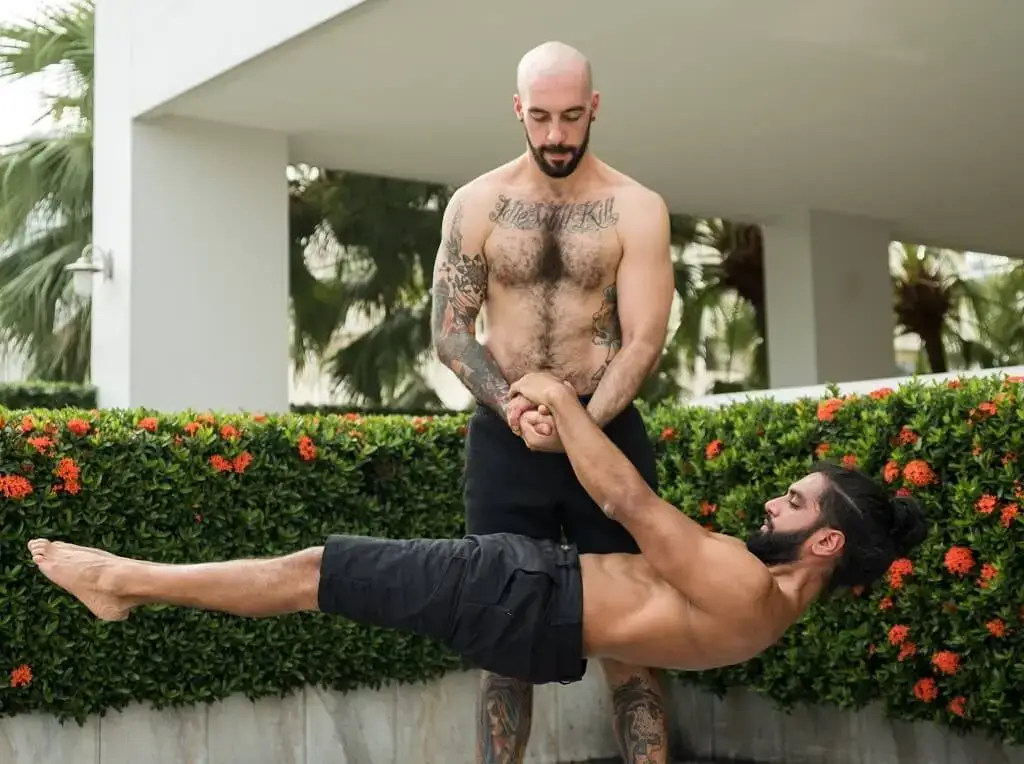
If you want to work your abs, the first few levels of front lever progression are a great starting point. When you want to work your abs, you pick a skill from a front lever progression and you are good to go. As front lever progression gets to the hardest moves, you will have to use your shoulder and upper back muscles more and more.
Lower back
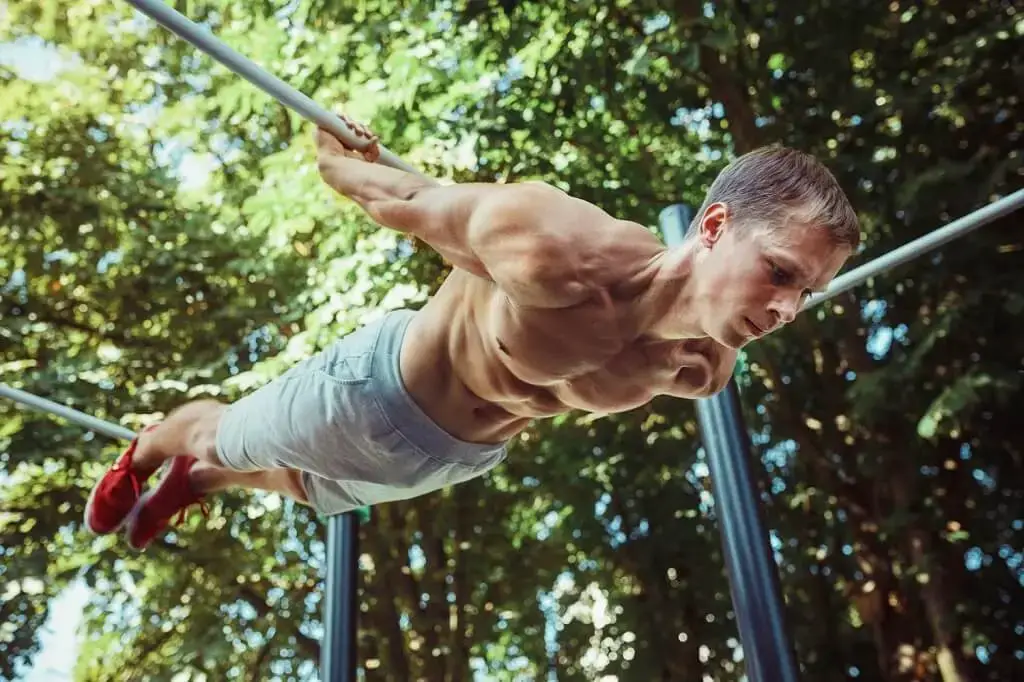
Back lever progression is a great starting point for working on your lower back muscles. When you reach the two most advanced levels your chest, shoulders, and upper back will get more and more involved.
Legs
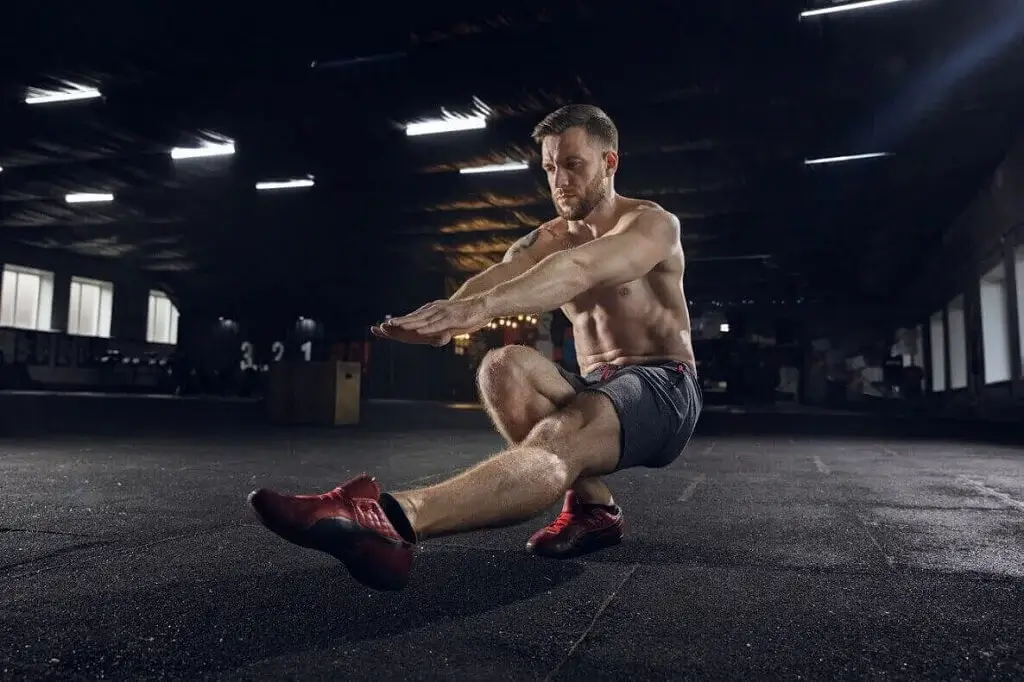
Pistol squat progression is a bit different than other progressions. It will make you work your lower back in the beginning and move to work your legs more and more as you progress. Be mindful of this when you start to not overwork your lower back muscles.
Upper back and biceps
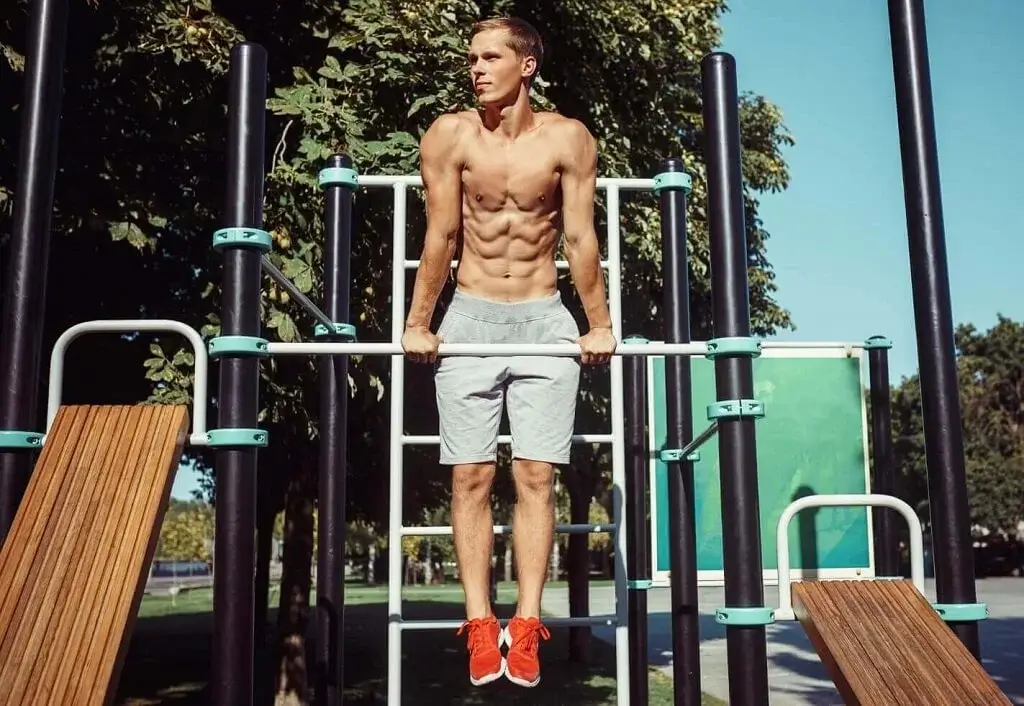
Muscle up progression will work your upper back and biceps. As with other progressions, when you get to the hardest skills other muscle groups will be used. As you work your way up, your chest and triceps will get involved as well.
Chest and triceps
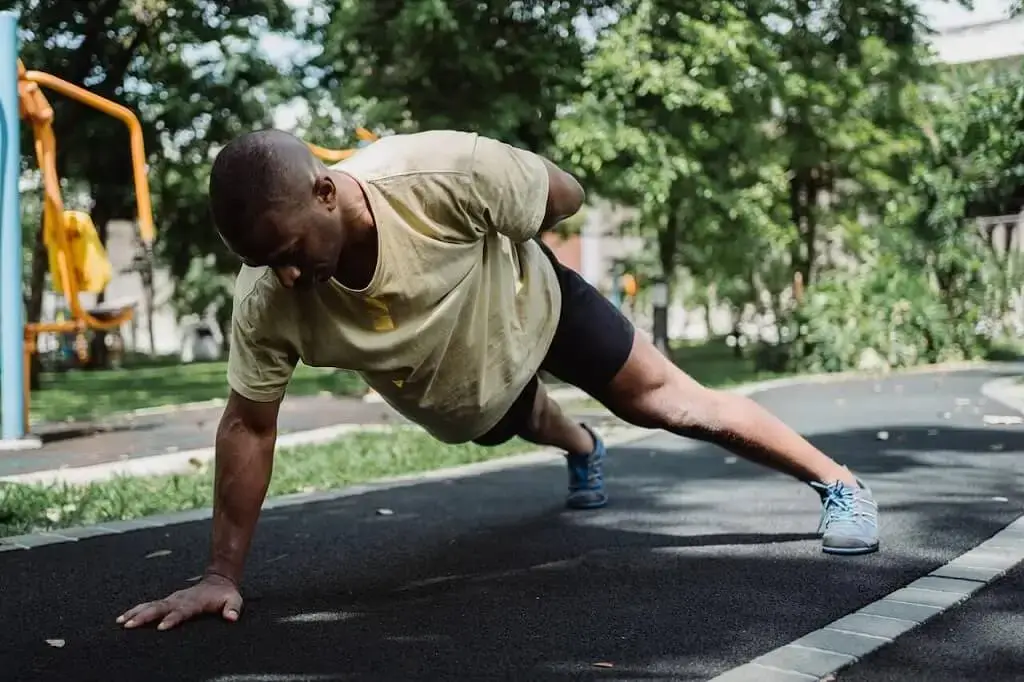
One arm push up progression is the one targeting your chest and triceps. On the easiest level, you will work your core muscles and then move to work your chest and triceps more and more. Your core muscles are your abs and your lower back.
Shoulders
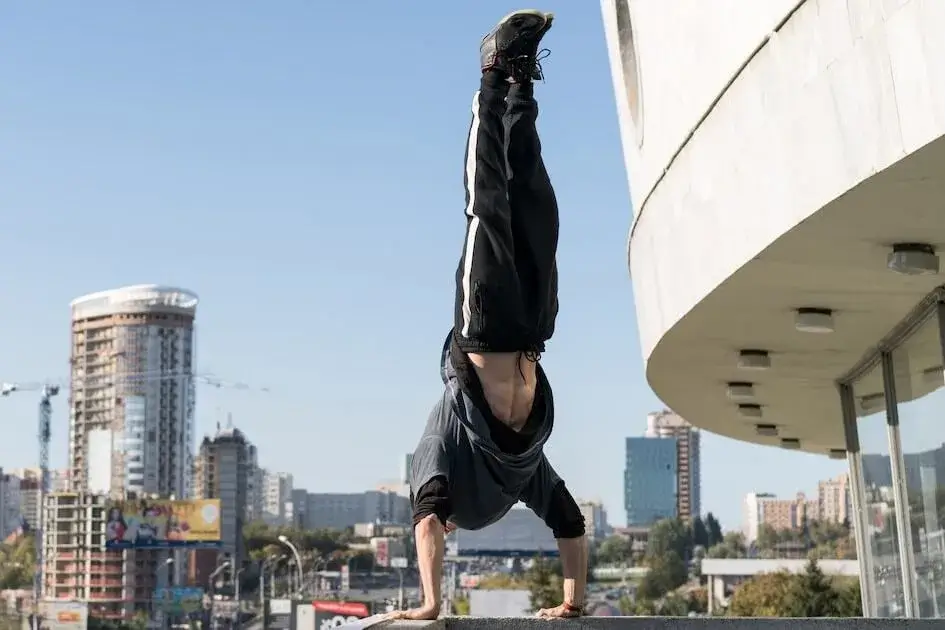
Handstand push up progression is the way to go for building strong shoulders. You will need to develop your balancing skills as you move through this progression. This can prove to be a tough task when you reach the hardest skills.
Be careful if you want to combine it with the front lever, back lever, one arm push up, muscle up, and planche because all those progressions will work your shoulders.
How to use progressions to create effective calisthenics workouts
In weight training progressing is pretty simple. You just add one more plate to a bar.
In bodyweight training, it’s not that simple. To progress in calisthenics, you have to do harder and harder moves. The difficulty of the skill is mostly achieved by using a longer lever.
You are working against gravity using your own body as a weight.
This is where progressions come in handy. They all start with easy moves. They are getting harder and harder one skill at a time.
If you are just starting out as a total beginner, starting with calisthenics is pretty easy. You start with the easiest skills in each progression and simply move on to the harder skill once you reach set requirements.
You move on one skill at a time.
If you are not a total beginner things get a bit more tricky. Before blindly skipping between skills, you have to find the right starting point in each progression.
You test your strength, flexibility, and balance by trying skills in one or a few training sessions. Start with the easiest ones trying to find skills that are just right for you.
The right move for you is the one you can perform for 5-8 reps in 3 sets. You do this test for each main muscle group.
When you find skills that are just right for you, you simply continue to follow the progression one skill at a time.
Full body calisthenics workout
Total beginners and advancing beginners will benefit the most by using full body workouts. Total body workouts will work all major muscle groups of your body in one session.
You will work out 3 times per week. Each workout day is followed by one day of rest. The last workout day is followed by 2 days of rest.
Your workout schedule will look like this:
Week 1:
- Monday: Total body workout 1
- Tuesday: Rest
- Wednesday: Total body workout 2
- Thursday: Rest
- Friday: Total body workout 3
- Saturday: Rest
- Sunday: Rest
Week 2:
- Monday: Total body workout 1
- Tuesday: Rest
- Wednesday: Total body workout 2
- Thursday: Rest
- Friday: Total body workout 3
- Saturday: Rest
- Sunday: Rest
This will ensure you are working on each muscle group 3 times per week. In each full body workout, you will be working on all progressions:
- Muscle up progression to work your upper back and biceps
- One arm push up progression to work your chest and triceps
- Handstand push up progression to work your shoulders
- Front lever progression to work your abs
- Back lever progression to work your lower back
- Pistol squat progression to work your leg muscles
Upper lower split calisthenics workout
Once you reach the intermediate level, you would want to try different things with your workouts. At the beginner level, almost anything you do will help you progress. It doesn’t work like that as you get more experienced.
On more advanced levels every nuance counts. Your nutrition will have to be exactly right. Your rest will have to be in order. Also, your workouts will have to be adjusted to be the most effective as possible.
To get the best possible workouts you would have to try different things and measure your progress. This is where various splits like upper/lower split and push/pull/legs come in handy.
When you want to use an upper/lower split type of workout in your training regime, here’s how to do it.
On the upper workout days, you will use skills from the following progressions:
On the lower workout days, you will use skills from the following progressions:
Upper lower workout split weekly schedule
This is what your weekly schedule may look like with an upper/lower split:
Week 1:
- Monday: Upper body workout 1
- Tuesday: Rest
- Wednesday: Lower body workout 1
- Thursday: Rest
- Friday: Upper body workout 2
- Saturday: Rest
- Sunday: Lower body workout 2
Week 2:
- Monday: Rest
- Tuesday: Upper body workout 1
- Wednesday: Rest
- Thursday: Lower body workout 1
- Friday: Rest
- Saturday: Upper body workout 2
- Sunday: Rest
This is just one option used as an example. Remember, at this level, it’s up to you to find what works best for you. There is no one size fits all formula. Everyone recovers differently.
You may want to do from one workout every week up to six workouts per week. It all depends on how well you are able to recover.
Push pull legs split calisthenics workout
Push pull legs split is another option you may try. As its name suggests, you will be doing pushing moves in one workout. In the next, you will be doing pulling moves. Lastly, on leg day you work your legs and core.
On a push day workout, you will use skills found in:
Pull workout is simple and uses moves from:
On a leg day, you will be working on:
An example of a push/pull/legs workout weekly schedule may look like this:
Week 1:
- Monday: Push workout
- Tuesday: Rest
- Wednesday: Pull workout
- Thursday: Rest
- Friday: Leg workout
- Saturday: Rest
- Sunday: Rest
Week 2:
- Monday: Push workout
- Tuesday: Rest
- Wednesday: Pull workout
- Thursday: Rest
- Friday: Leg workout
- Saturday: Rest
- Sunday: Rest
Again, this is just an example. At this level, you have to find what exactly works best for you.
How to customize your calisthenics workouts
By this point, you may be asking yourself how to customize your workouts. If you are a beginner, a generic approach might work well. So, three full body workouts per week will be useful for someone just starting out.
If you are getting to the intermediate level or you are already struggling with plateaus, progress, and setbacks, you might benefit from customizing your workouts.
So, what you can experiment with?
Increasing or decreasing workload. Increasing or decreasing rest between workouts.
When doing any kind of experiment, you can’t know for sure if something is working or not. You have to give it enough time to see if it’s working. Also, you don’t want to do several different changes at once. You will not know which change was effective if you do. Only change one thing at a time.
When you make a change, stick with it for at least 60-90 days and measure progress. If you notice progress, keep on with what’s working. If you notice a decline in performance or you are staying at the same level, revert back and try changing something else.
Changing workload
If you want to change your workload there are several options you can try to change. First is the number of sets/reps. So far, you’ve been changing the number of reps for each exercise. This is how you naturally progressed.
Changing the number of sets
When this no longer works, there are other options to try. First is the number of sets.
If you want to increase the load, you simply add another set. So, instead of doing 3 sets of 6 reps, you will go for 4 sets with let’s say 5 reps. It’s because you will not be able to pull off one more set if you keep the existing number of reps. If you can, you were not working hard enough so far.
Changing the number of workouts
Another thing you can try is changing the number of workouts you do in a week. Let’s say, you want to increase the load. If you were doing 3 workouts, you may want to try going with 4.
Again, measure your performance. If this works better keep it. If not, revert back and try changing something else.
Changing workout splits
If you were doing only full body workouts so far, you may be wanting to try different splits. But what will a split do to the workload?
If you keep the same number of exercises, sets, and reps per muscle group in one workout, you will drastically decrease the load.
Total body calisthenics workout split
Let’s compare one week of total body workouts with one week of push/pull/leg workouts.
In a total body workout you will be doing the following:
- Monday: Total body workout 1
- Tuesday: Rest
- Wednesday: Total body workout 2
- Thursday: Rest
- Friday: Total body workout 3
- Saturday: Rest
- Sunday: Rest
In each workout, you work all muscle groups. So you will be doing:
- 3 workouts with 3 sets each with e.g. 7 reps upper back and biceps = 63 reps
- 3 workouts with 3 sets each with e.g. 7 reps chest and triceps = 63 reps
- 3 workouts with 3 sets each with e.g. 7 reps shoulders = 63 reps
- 3 workouts with 3 sets each with e.g. 7 reps abs = 63 reps
- 3 workouts with 3 sets each with e.g. 7 reps lower back = 63 reps
- 3 workouts with 3 sets each with e.g. 7 reps legs = 63 reps
- Total: 378 reps in a week
With a full body workout, you will be working on each muscle group three times per week. When you switch to push/pull/legs, you will be working on each muscle group once a week.
Push pull legs calisthenics workout split
With push/pull/legs split you will be doing one push, one pull, and one leg workout in a week:
- Monday: Push workout
- Tuesday: Rest
- Wednesday: Pull workout
- Thursday: Rest
- Friday: Leg workout
- Saturday: Rest
- Sunday: Rest
If you just switch to push/pull/legs and keep the same count of sets and reps per muscle group you will be doing:
- 1 workout with 3 sets each with e.g. 7 reps upper back and biceps = 21 reps
- 1 workout with 3 sets each with e.g. 7 reps chest and triceps = 21 reps
- 1 workout with 3 sets each with e.g. 7 reps shoulders = 21 reps
- 1 workout with 3 sets each with e.g. 7 reps abs = 21 reps
- 1 workout with 3 sets each with e.g. 7 reps lower back = 21 reps
- 1 workout with 3 sets each with e.g. 7 reps legs = 21 reps
- Total: 126 reps in a week
You just reduced the workload to one third by switching from full body to push/pull/legs split.
But, you will usually want to switch to push/pull/legs split from the total body to increase the load. So, you will have to more than triple the number of exercises you do in one total body workout for one muscle group.
This will feel easier than adding another set to an existing full body workout. But, it will be harder for the specific muscle group you are targeting in a single workout. The load will be more than tripled for that specific muscle group.
So, be careful when switching to another kind of split. Maybe try to go from full body to upper/lower split. If this works for you, you may try to switch from upper/lower split to push/pull/legs.
Complete beginner calisthenics workout example
Let’s say you are a beginner just starting out. You stumbled upon bodyweight training and you want to try it. What will your first workout look like?
Let’s see how to create your own workout, using the info you just learned.
First, you have to know when you are working and when you are resting. So here is your weekly schedule:
- Monday: Total body workout 1
- Tuesday: Rest
- Wednesday: Total body workout 2
- Thursday: Rest
- Friday: Total body workout 3
- Saturday: Rest
- Sunday: Rest
Beginner calisthenics workout example
Now, you want to pick exercises for your “Total body workout 1” you are doing on Monday. You go to each progression link and chose the easiest exercise in a progression.
Here’s what you will get:
Total body workout 1:
- Upper back and biceps exercise – Low bar hang
- Leg exercise – Glute bridges (also working your lower back)
- Chest and triceps – Plank on knees and elbows (actually more your lower back and abs than chest and triceps)
- Shoulders – Downward dog
- Abs – Tuck hollow hold
- Lower back – Swimmers
As you may have noticed you will mostly do isometric holds. That’s holding one position without moving. Only two exercises will be done for reps.
The starting number of sets and reps will be:
- Upper back and biceps
- 3×10s low bar hang
- Legs
- 3×5 glute bridges
- Chest and triceps
- 3×15s plank on knees and elbows
- Shoulders
- 3×10s downward dog holds
- Abs
- 3×15s tuck hollow holds
- Lower back
- 3×5 lower body lifts
If you were able to do all the exercises with the prescribed number of sets, reps or hold durations, you can increase the numbers in the next workout. If it was too hard for you, and you were able to do less, no problem. Just note down what you were able to do and work from those numbers.
How to progress with calisthenics workouts
If you were able to do all sets and reps listed above, you would naturally want to do more in your next workout.
Here’s the idea of how you should progress. If you were able to do 3 sets with 5 reps in each set, you were doing 5, 5, 5 in your first workout.
In the next workout, you will increase the difficulty just a little bit. On your next workout, you will be doing 6, 5, 5 reps. So, you will only raise the number of reps in the first set.
If you were able to pull this off in your second workout, you will want to increase the difficulty on your third workout just a little bit more. So, on your third workout, you will be doing 6, 6, 5 reps.
If everything worked fine and you are able to continue, you will be doing 3 sets with 6 reps in each set on your fourth workout.
If there was an isometric skill, you would simply want to increase the duration of a hold by 3 seconds in all sets.
Now, knowing the numbers in your first workout and assuming you were able to do all as prescribed, this is what you will be doing in “Total body workout 2”:
- Upper back and biceps
- 3×13s low bar hang
- Legs
- 6, 5, 5 glute bridges
- Chest and triceps
- 3×18s plank on knees and elbows
- Shoulders
- 3×13s downward dog holds
- Abs
- 3×18s tuck hollow holds
- Lower back
- 6, 5, 5 lower body lifts
Key takeaways
When you are just starting your fitness journey, it’s fairly easy to progress. It may not seem like it, but wait till you get to the next level. When you do, you will know how easy it was when you just started.
To build muscle mass and strength with weights you simply add another plate to the bar. With calisthenics, it’s not that easy. You have to use harder and harder moves to keep progressing. This is why progressions come in handy.
You can use progression to measure your current level of skills. But, you can also use it as a tool to keep challenging yourself.
Once you know your level in each of the progressions, it’s easy to keep on building upon the existing level of strength, flexibility and balance you currently have.
Keep on adding reps and seconds to your exercises and you will reach an advanced level for each muscle group.
I hope this workout guide helps you at whatever level of your fitness journey you may be.



